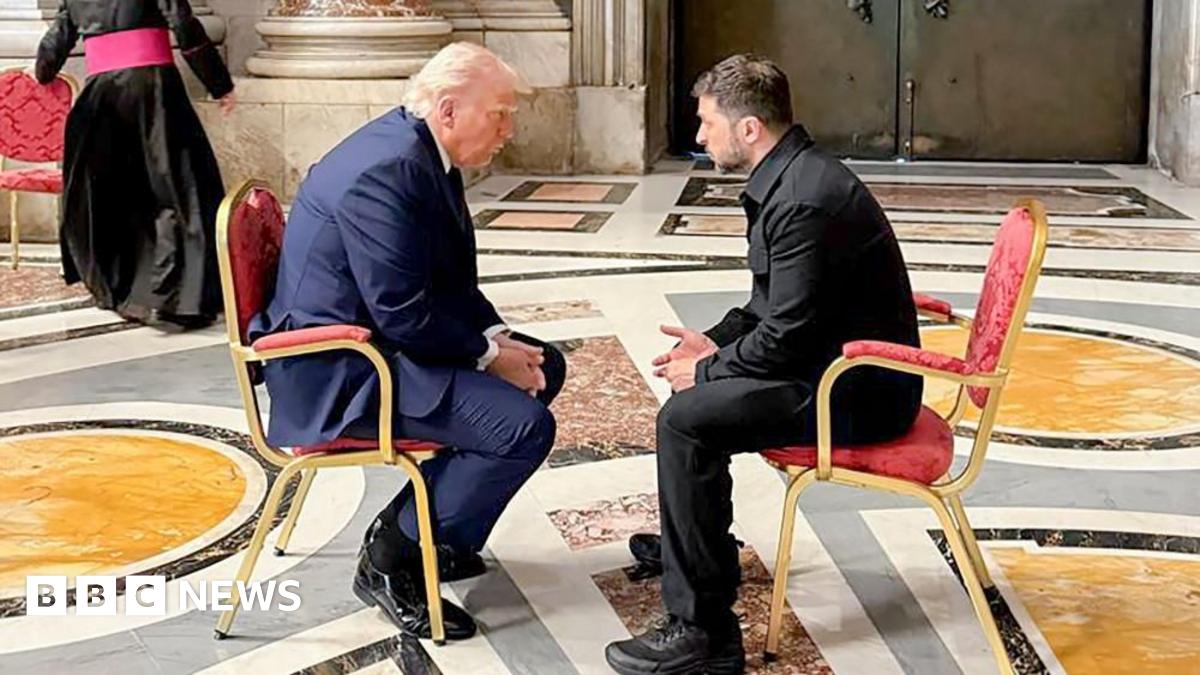“`html
Europe’s Defense Industry Faces Modernization Hurdles Amid Rising Tensions
WASHINGTON (Archyde.com) — As global tensions escalate and the U.S. recalibrates its role as Europe’s primary security guarantor, European leaders are scrambling to bolster their defense production capabilities. However, significant challenges remain in modernizing a fragmented industry still reliant on outdated practices.
Trump’s Pressure and NATO’s 2% Target: A Recurring Theme
Former U.S. President Donald Trump repeatedly criticized European nations for what he deemed insufficient defense spending, echoing similar sentiments expressed by other administrations. His warnings that the U.S. might curtail its support unless NATO members allocate at least 2% of their GDP to defense spurred many European countries to pledge increased financial commitments.
Belgium’s budget minister, Vincent Van Peteghem, stated in the Financial Times, that Belgium “is working to meet Nato’s goal” through a combination of increased funding, the sale of state-owned assets, and borrowing from the EU’s €150 billion fund. However, Van Peteghem also acknowledged Belgium’s existing high debt levels, noting that further borrowing “could cause political problems.”
Despite these promises, the reality on the ground reveals a more complex picture. While intentions are clear, Europe’s defense companies are struggling to ramp up production quickly enough to meet current and anticipated demands. This situation raises concerns about Europe’s ability to adequately defend itself and fulfill its commitments to NATO.
A Fragmented Industry Struggles to Adapt to Modern Warfare
The challenges faced by FN Herstal, a major Belgian gunmaker and NATO supplier, exemplify the broader issues plaguing Europe’s defense manufacturing sector. The company’s CEO, Julien Compere, explained that thay “are already using their current facilities as much as possible” and “do not feel confident enough to invest in major expansions.”
Even with increased demand fueled by the war in Ukraine and rising orders from NATO members, companies like Herstal grapple with a shortage of long-term contracts and insufficient financial backing. According to Compere, the primary obstacle is “the lack of long-term planning.” he stated that “once there is clear data about future needs, other challenges like getting materials and hiring staff can be solved.”
at FN Herstal, weapons manufacturing remains a largely manual process. Henry De Harenne, a spokesperson for the company, noted that while “machines can do a lot, human experiance is still very significant for some parts of the work,” explaining why workers still “file each metal piece by hand after it’s cut by machine, before the gun is finally assembled.” This reliance on traditional methods hinders the company’s ability to considerably increase production volume.
despite increased demand, Compere admitted that his company increased its production of the FN Minimi light machine gun “from 3,000 to 4,500 units” only by “pushing their current systems harder—not by building anything new.” He also said that the FN Evolys, “which is a lightweight machine gun made with 3D printing, is still being produced in small amounts” as they “don’t have enough confirmed orders to support larger-scale production.”
the European Defense Puzzle: National Interests vs. collective Security
While European nations individually pledge increased defense spending,the overall arms market remains fragmented. Compere observed that each country “still prefers to focus on building its own local defense industry instead of working together across Europe.” This preference hinders the growth of companies into major European players.He suggested that “joint contracts and cross-border cooperation could help reduce waste caused by each country doing the same work separately.”
To address this,FN Herstal has entered into a 20-year,€1.3 billion contract with the Belgian government for weapons maintenance and ammunition supply. Compere views ongoing discussions with France and other European nations to broaden this type of arrangement as “a first step toward better cooperation within Europe.” He also indicated that “mergers and acquisitions are part of their plans,” highlighting FN Herstal’s ownership of the U.S. gun company Browning and ongoing negotiations to acquire Sofisport, a French shell manufacturer. These actions reflect the need to evolve beyond traditional methods and adapt to modern defense requirements. But as Compere explained, “these goals depend on getting clear rules and steady demand—two things Europe still hasn’t fully put in place.”
germany’s High-Tech Turn: A Glimpse into the Future?
In contrast to the traditional practices in some sectors, Germany is actively pursuing technological advancements in defense. The German military, or Bundeswehr, has initiated a secret project called “Uranos KI,” focused on leveraging artificial intelligence (AI) for real-time surveillance and data analysis along NATO’s eastern border.
Key players in this initiative include major defense contractors like Airbus, Rheinmetall, and Hensoldt, as well as newer companies such as Quantum Systems and Helsing. Arx Robotics, specializing in ground-based systems, is also contributing. The project aims to establish a digital command center capable of integrating drone video, radar signals, and satellite imagery to create a complete battlefield overview. The ultimate goal involves a small team monitoring expansive areas and possibly transmitting target data directly to autonomous weapons systems, albeit with human oversight.
This project, backed by at least €80 million in funding, signifies a shift toward a defense paradigm where software assumes greater importance than physical hardware. The concept is that adaptable software will enable military assets to evolve and improve at a pace exceeding that of conventional equipment. such a shift could significantly impact the balance of power and the nature of modern warfare.
The Helsing Question: Disruptive Innovation or Overhyped potential?
Helsing, a Munich-based startup founded in 2021, is a focal point of both excitement and skepticism within the Uranos project. Valued as Germany’s most triumphant defense startup, Helsing has secured €830 million in venture capital from investors such as Prima Materia and La Famiglia.
Helsing asserts its leadership in applying AI to electronic warfare, promising to revolutionize combat through smart algorithms capable of instant object recognition, autonomous movement, and even target selection and tracking. However, some industry insiders remain unconvinced, with critics suggesting that Helsing resembles “a ‘marketing firm’” more than a genuine technology leader. Doubters argue that Helsing has yet to demonstrate substantial achievements in AI or software progress and lacks access to the specialized training data essential for advanced military AI. Helsing counters by claiming the ability to develop AI without such data, a proposition met with skepticism by many experts.
despite these doubts, Helsing’s involvement in the Uranos project underscores Europe’s willingness to invest in innovative tech startups to modernize its defense capabilities. Whether these high-risk investments will yield the promised results remains to be seen.
The role of EU Investment in Revitalizing Defense Production
Recognizing the severity of the challenges, the European Commission is actively pursuing a more unified strategy, planning to allocate €150 billion in loans and funding programs to bolster the defense industry. This initiative forms part of a broader strategy to enhance defense production efficiency and scale. However, translating these plans into tangible outcomes remains a formidable task.
Countries such as Belgium face arduous decisions. meeting NATO’s spending targets may necessitate the sale of public assets and reductions in welfare spending, creating political friction. Other nations may confront similar trade-offs depending on their financial circumstances.
Moreover,Europe’s defense sector has suffered from prolonged underinvestment,resulting in a shortage of skilled engineers,outdated production infrastructure,and significant reliance on non-European parts suppliers. Addressing these issues will require sustained, long-term effort, unwavering political commitment, and robust cooperation among European nations—a historically challenging endeavor.Without sustained commitment, the goal of a self-sufficient and modernized European defense industry will remain elusive.
What must Change to Secure Europe’s Defense Future
For Europe to achieve genuine control over its defense, a comprehensive modernization of its weapons industry is
, it hazy! and prompts you further
Interview: Dr. Anya sharma on Europe’s Defense industry Modernization hurdles
WASHINGTON (Archyde.com) – May 9, 2025
Introduction: Navigating the Murky Waters
Archyde.com: Welcome to Archyde.com, Dr. Sharma. Thank you for joining us to shed some light on the complex challenges facing Europe’s defense industry. As global tensions rise, how do you see the current push for modernization playing out?
dr. Sharma: Thank you for having me. The push for modernization is crucial, given the evolving threats and the need for Europe to assert its security independently. However, it’s a complex dance. The existing fragmentation, coupled with financial constraints and reliance on outdated practices, presents substantial hurdles.
Fragmented Industry: Internal Roadblocks
Archyde.com: The article highlights the fragmentation within the European arms market. How important is this factor in hindering companies like FN Herstal from significant expansion and innovation?
Dr. Sharma: It’s a severe limitation. Companies are often forced to compete against each other instead of collaborating. This duplication leads to inefficiencies and wasted resources. The article correctly points out that joint contracts and cross-border cooperation are essential. Without it,individual nations will struggle to compete on a global scale,and smaller companies may find it hard to grow.
The AI Integration game
Archyde.com: Germany’s Uranos KI project is an interesting case study.Though,Helsing’s involvement has raised some eyebrows. From your viewpoint, is it a case of disruptive innovation or potentially overhyped potential?
Dr. Sharma: A bit of both, perhaps.Artificial Intelligence and electronic warfare are certainly the future, but Helsing’s success depends on the actual software progress. The reality is that real progress can only be achieved when you provide the company with access to the data that allows them to train their model and get the necessary feedback on their model.It is vital to have proven results rather than statements about future abilities. While the potential is there, the risks are high if the foundational AI capabilities are not fully present.
Financial and Political Maneuvers
Archyde.com: The European Commission has earmarked €150 billion for defense industry projects.Are these funds realistically sufficient to fuel the needed changes, especially when coupled with the budget pressures some nations face?
Dr. Sharma: No. More money could be allocated overall. The funds the Commission is providing are a vital starting point, but the commitment has to involve far more. The challenge lies not only in the amount,but also in the effective allocation and the structural reforms surrounding them. Such as: the European financial institutions currently operate with a lack of skilled labor, outdated production infrastructure, and excessive reliance on non-European suppliers. These problems will need long-term, concerted financial investments to solve them.
The future of European Defense
Archyde.com: What are the key steps needed, in your view, to ensure Europe’s future defense independence and modernize its industry? What are the crucial areas for reform?
Dr. Sharma: First and foremost, standardized defense requirements across countries. Second, increased collaboration via joint projects and the development of standardized equipment.Third, investment in R&D, notably in areas like AI and automation. Fourth the establishment of a clear long-term demand for contractors. Last but not least, significant investment in education to address the current labor shortage.
Reader Participation & Discussion
Archyde.com: Dr. Sharma, thank you for sharing your expertise with us. Now, our readers, what strategies do you think would best support Europe’s Defense Industry? Share your thoughts in the comments below.

)
:focal(1219x394:1221x392)/origin-imgresizer.eurosport.com/2024/11/07/image-15b7c207-cc64-46a9-ab23-9633dab0efa9-85-2560-1440.jpeg)





